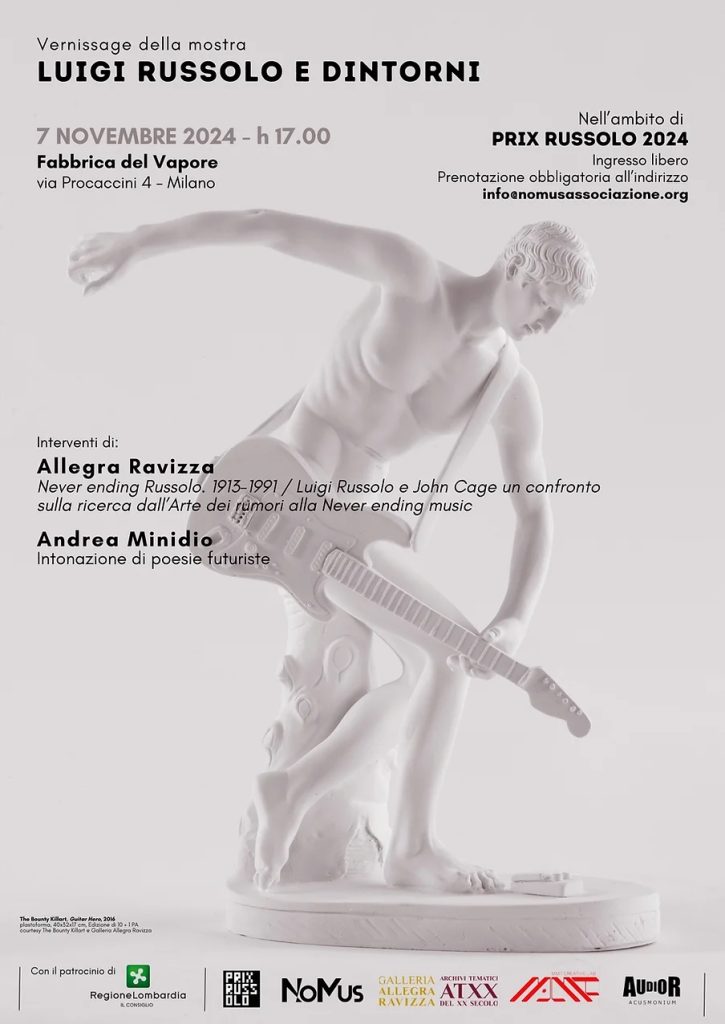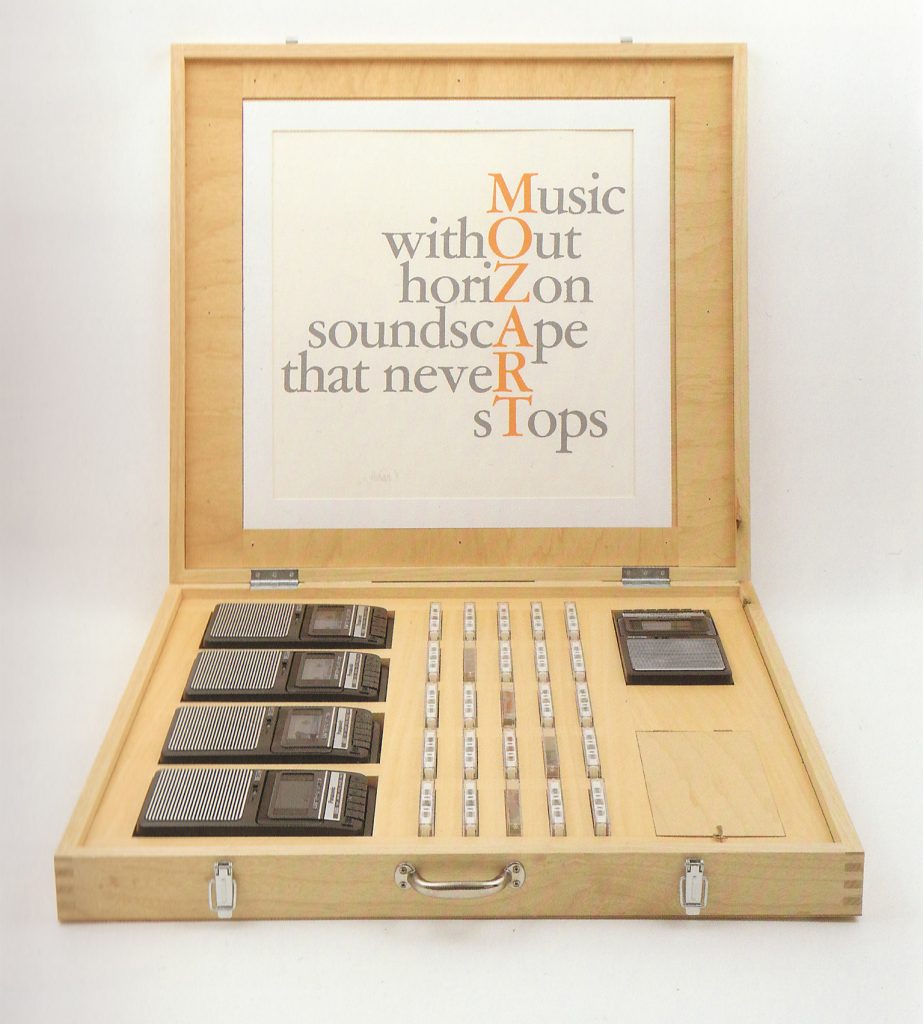
NEVER ENDING RUSSOLO 1913-1991
Luigi Russolo and John Cage a comparison of research from the Art of Noise to Never ending music

November 7th at 5 PM
Fabbrica del Vapore, Milan – Via Procaccini, 4
Speakers:
Allegra Ravizza Never ending Russolo 1913-1991
Luigi Russolo and John Cage a comparison of research from the Art of Noise to Never ending music
Andrea Minidio Intonation of Futurist Poems
November 7 – 9 – 10, 2024
free admission | reservations required at info@nomusassociazione.org
NEVER ENDING RUSSOLO | 1913-1991
Luigi Russolo and John Cage a comparison of research from the Art of Noise to Never Ending Music
“Ancient life was all silence. In the nineteenth century, with the invention of machines, Noise was born. Today, Noise triumphs and reigns supreme over the sensibilities of men.”
Thus the Futurist painter Luigi Russolo (1885-1947) declares in his manifesto entitled The Art of Noise (1913) how the invention of machines expanded the sphere of sounds, making it necessary for music to evolve: noise, for Russolo, is music.
In the same year, with the help of his friend Ugo Piatti, Russolo invented and built new musical instruments capable of reproducing the noises of modernity: the INTONARUMORI.
Russolo’s insight represents a nodal point in the history of music perception and enacts a reversal of the listening perspective that could not be ignored by later composers. Among them is California composer John Cage (1912-1992), who devoted his entire life to the study of noise, coming to the conclusion that
“…There is no such thing as silence. Something always happens that produces sound.”
It was from this deduction that in 1952 he composed the work 4’33”: 4 minutes and 33 seconds of musical interruption that is composed of the sounds randomly emitted by the surrounding environment. In 1960 he published “Silence” in which he wrote, “Wherever we are, what we hear is always noise.”
In 1991 he created the sound installation titled “Mozart Mix” a tribute to the famous Austrian composer: 5 cassette players simultaneously play 5 of the 25 cassette tapes that make up the work a wooden box inside of which are inserted 25 tapes divided by 5 colors, containing excerpts from the entire musical oeuvre of Wolfgang Amadeus Mozart (1756-1791) and 5 cassette players with speakers. By randomly choosing five of the 25 tapes, one by color, the cassette players play simultaneously, demonstrating how in the apparent randomness of the sounds, which are disharmonious, harmony still manages to prevail. This work encapsulates one of John Cage’s pivotal ideas: nature operates and behaves unpredictably and chaotically.

Galleria Allegra Ravizza
Piazza Cioccaro 11 6900 Lugano, CH
dal lunedì al venerdì su appuntamento
Tel: +41 (0)91 2243187
art@allegraravizza.com
www.allegraravizza.com